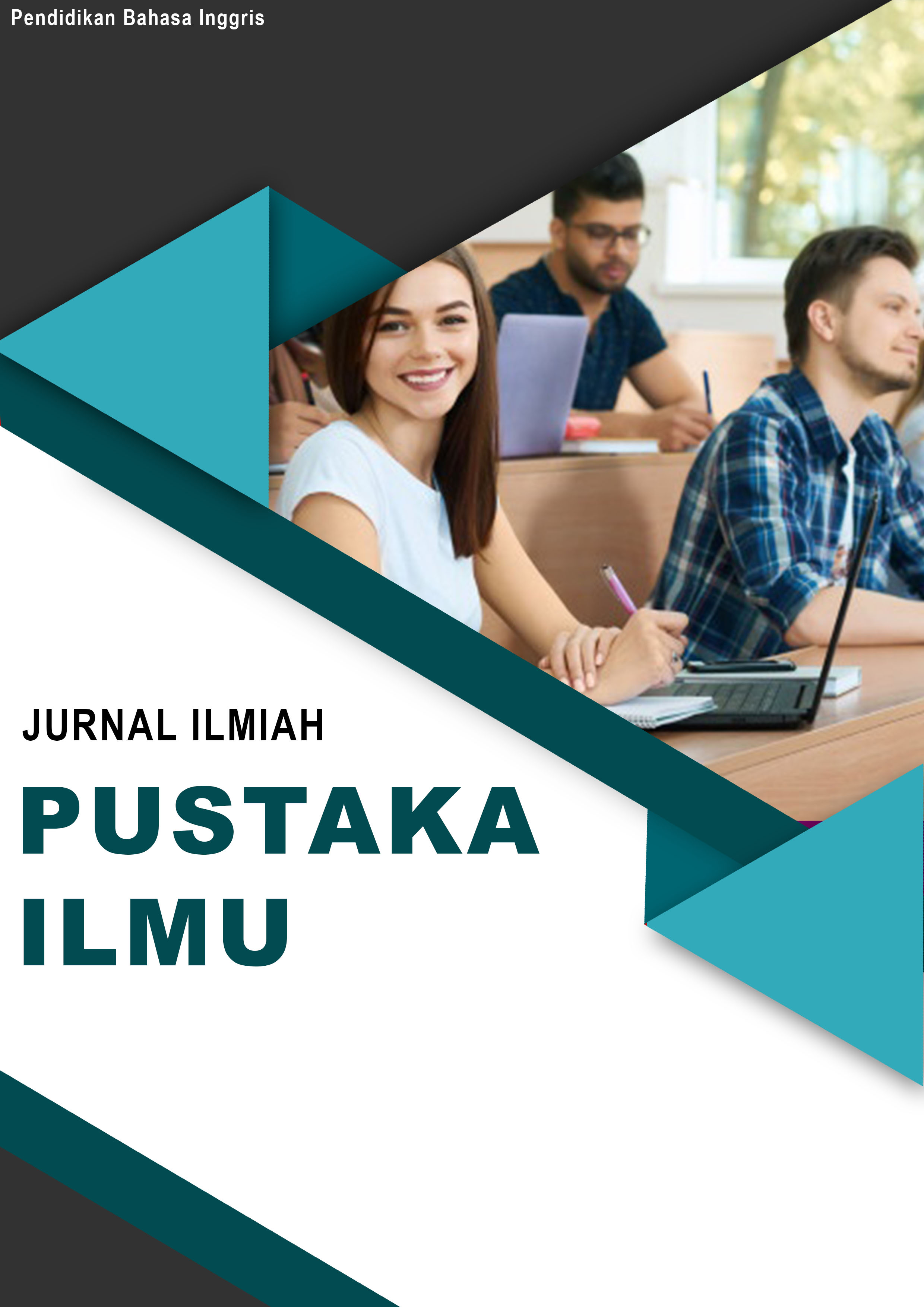THE FEATURES OF DYSTOPIAN AS DEPICTED IN MARGARETH ATWOOD’S ORYX AND CRAKE NOVEL
Kata Kunci:
Characteristic of Dystopian, Dystopian, Sociological Approach.Abstrak
This research discusses the features of dystopian in Oryx and Crake novel written by Margaret Atwood. The researchers is interested to discuss about the features of dystopian because dystopian literature could be one of the future vision about what will happen to the humankind who live in the earth and we as the current humankind generation may find the best way to live side by side with the earth. The researchers applies sociological approach and uses qualitative in research in conduction the research. The researchers found all 3 characteristics in dystopian setting which are: The setting is usually set in a hopeless world where a portion of the population survives some sort of global disaster, the setting will center on citizen uprisings, and there are also man-made disasters like overpopulation, genetic-engineering. In the protagonist categories, the researchers found 1 from 3 characteristics which is the protagonists often questioning the rules of society and political systems. They believe or feel that something is terribly wrong with the society in which he or she lives.
Referensi
Adrian, Q. J., Madani, M. F., El Hoby, H. M. H., & Dahlan, A. R. A. (n.d.). Knowledge Transfer Program (KTP) from International Islamic University Malaysia (IIUM): Leveraging MyEntrepreneur2Cloud and Network of Mosque (NoM) to Obliterate Poverty in Malaysia.
Amelia, D. (2021). Antigone’s Phallus Envy and Its Comparison to Indonesian Dramas’ Characters: A Freudian Perspective. Vivid: Journal of Language and Literature, 10(1), 23–30.
Amelia, D., & Daud, J. (2020). FREUDIAN TRIPARTITE ON DETECTIVE FICTION: THE TOKYO ZODIAC MURDERS. Language Literacy: Journal of Linguistics, Literature, and Language Teaching, 4(2), 299–305.
Amelia, D., & Dintasi, F. D. (2019). Ephebophilia suffered by the main character. Teknosastik, 15(2), 81–86.
Ayu, M., & Zuraida, Z. (2020). ENHANCING DESCRIPTIVE PARAGRAPH WRITING OF SECONDARY STUDENTS THROUGH SHARED WRITING. Journal of Research on Language Education, 1(1).
Berlinda, M. (2015). Teachers’ Beliefs On The Use Of Authentic Materialis To Teach Listening. UNS (Sebelas Maret University).
Daun-Barnett, N., & Affolter-Caine, B. (2005). Utilizing Geographic Information Systems (GIS) to Influence State Policy: A new descriptive, diagnostic, and analytical tool for higher education research. Public Policy Conference.
Eklesia, G., & Rido, A. (2020). Representation of People with HIV/AIDS in The Jakarta Post and Jakarta Globe: A Critical Discourse Analysis. TEKNOSASTIK, 18(2), 120–133.
Gazali, F., & Yusmaita, E. (2018). Analisis Prior Knowledge Konsep Asam Basa Siswa Kelas XI SMA untuk Merancang Modul Kimia Berbasis REACT. Jurnal Eksakta Pendidikan (Jep), 2(2), 202. https://doi.org/10.24036/jep/vol2-iss2/249
Gulö, I. (2014). Unique characteristics of Nias language. International Journal of English and Education, 3(3), 26–32.
Handayani, E. T., & Aminatun, D. (2020). STUDENTS’POINT OF VIEW ON THE USE OF WHATSAPP GROUP TO ELEVATE WRITING ABILITY. Journal of English Language Teaching and Learning, 1(2), 31–37.
Heri Kuswoyo, S. S., & Wahyudin, A. Y. (2017). Improving Student‟ s Listening Skill Using Task-Based Approach in EFL Classroom Setting.
Kardiansyah, M. Y. (n.d.-a). ENHANCING DESCRIPTIVE PARAGRAPH WRITING OF SECONDARY STUDENTS THROUGH SHARED WRITING.
Kardiansyah, M. Y. (n.d.-b). Metaphysic Paradox upon Daemon Character as Delineated in Philip Pullman’s Northern Lights.
Kuswoyo, H., & Audina, A. Y. (2020). Consecutive Interpreting Strategies on A Court Setting: A Study of English into Indonesia Interpretation. TEKNOSASTIK, 18(2), 90–102.
Kuswoyo, H., & Wahyudin, A. Y. (2017). Improving Student’s Listening Skill Using Task-Based Approach in EFL Classroom Setting. 4th Asia Pacific Education Conference (AECON 2017), 118–123.
Mandasari, B. (n.d.). FACTORS INFLUENCING TEACHERS’BELIEFS ON THE USE OF AUTHENTIC MATERIALS TO TEACH LISTENING.
Mandasari, B. (2016). An Analysis of Teachers’ Beliefs toward Authentic Materials in Teaching Listening. Teknosastik, 14(1), 19–25.
Mertania, Y., & Amelia, D. (2020). Black Skin White Mask: Hybrid Identity of the Main Character as Depicted in Tagore’s The Home and The World. Linguistics and Literature Journal, 1(1), 7–12.
Muliyah, P., & Aminatun, D. (2020). Teaching English for Specific Purposes in Vocational High School: Teachers’ Beliefs and Practices. Journal of English Teaching, 6(2), 122–133.
Muliyah, P., Rekha, A., & Aminatun, D. (2020). Learning from Mistakes: Students’ Perception towards Teacher’s Attitude in Writing Correction. Lexeme: Journal of Linguistics and Applied Linguistics, 2(1), 44–52.
Mulyanto, A., Susanti, E., Rossi, F., Wajiran, W., & Borman, R. I. (n.d.). Penerapan Convolutional Neural Network (CNN) pada Pengenalan Aksara Lampung Berbasis Optical Character Recognition (OCR). JEPIN (Jurnal Edukasi Dan Penelitian Informatika), 7(1), 52–57.
Oktaviani, L., & Desiarti, E. M. (2019). A lecturer’s and students’ perspective toward ethnic snake game in speaking class at Universitas Muhammadiyah Malang. Teknosastik, 15(2), 53–59.
Pranoto, B. E. (2021). Insights from Students’ Perspective of 9GAG Humorous Memes Used in EFL Classroom. Thirteenth Conference on Applied Linguistics (CONAPLIN 2020), 72–76.
Puspita, D., & Pranoto, B. E. (2021). The attitude of Japanese newspapers in narrating disaster events: Appraisal in critical discourse study. Studies in English Language and Education, 8(2), 796–817.
Pustika, R. (2020). Future English teachers’ perspective towards the implementation of e-learning in Covid-19 pandemic era. Journal of English Language Teaching and Linguistics, 5(3), 383–391.
Rido, A. (2015). The use of discourse markers as an interactive feature in science lecture discourse in L2 setting. Teflin Journal, 21(1), 90–106.
Rido, A., Kuswoyo, H., & Ayu, R. (2020). Interaction management strategies in English literature lectures in Indonesian university setting. Indonesian Journal of EFL and Linguistics, 5(2), 315–337.
Rido, A., & Sari, F. M. (2018). Characteristics of classroom interaction of English language teachers in Indonesia and Malaysia. International Journal of Language Education, 2(1), 40–50.
Suprayogi, S., & Novanti, E. A. (2021). EFL Learner’s Literary Competence Mapping through Reader-Response Writing Assessed using CCEA GCSE Mark Scheme. Celt: A Journal of Culture, English Language Teaching & Literature, 21(1), 1.
Wahyudin, A. Y. (2018). Maximizing Outlining Practice in Teaching Writing for EFL Secondary Students: A Research Perspective. Universitas Teknokrat Indonesia, 45.
Yulianti, T., & Sulistiyawati, A. (2020). The Blended Learning for Student’s Character Building. International Conference on Progressive Education (ICOPE 2019), 56–60.


